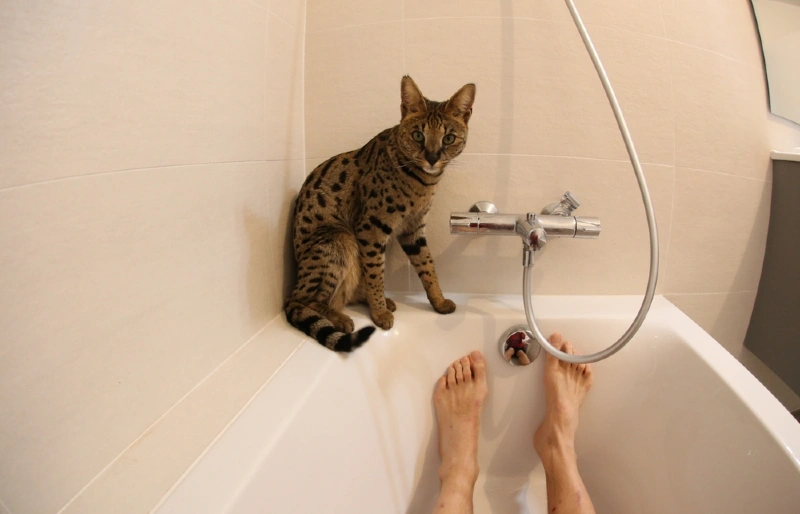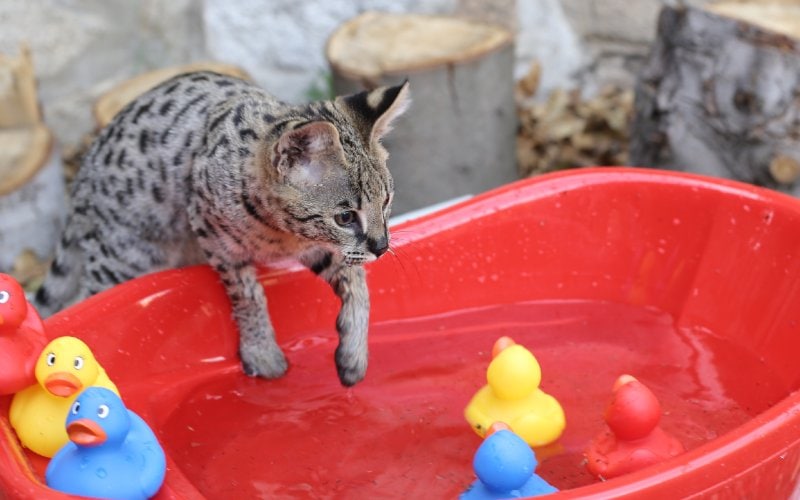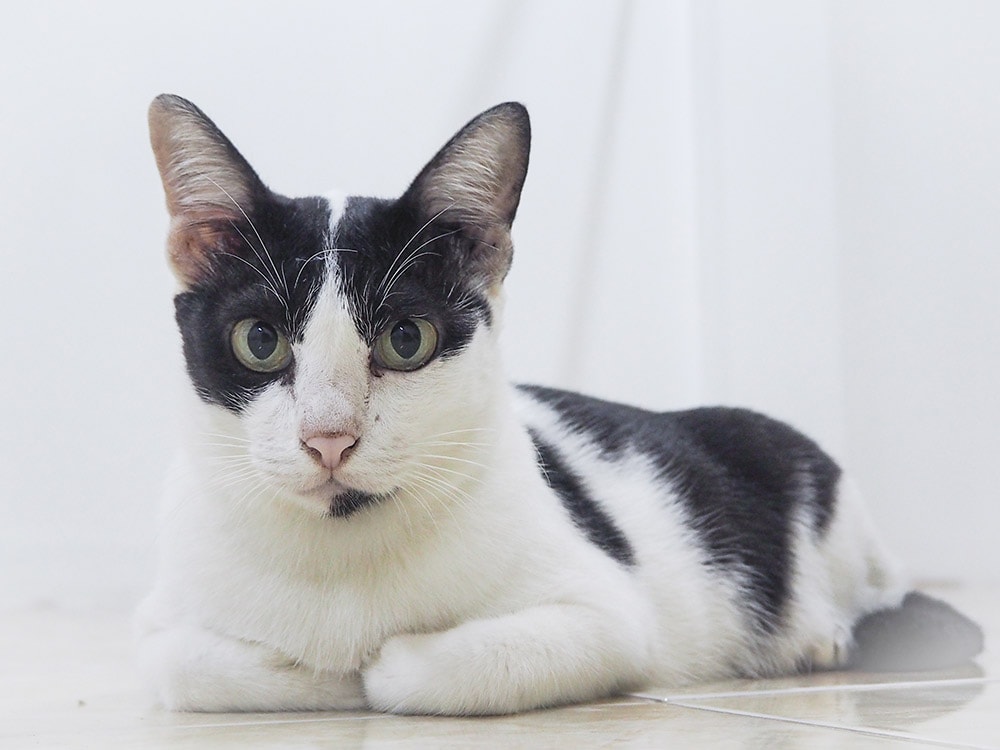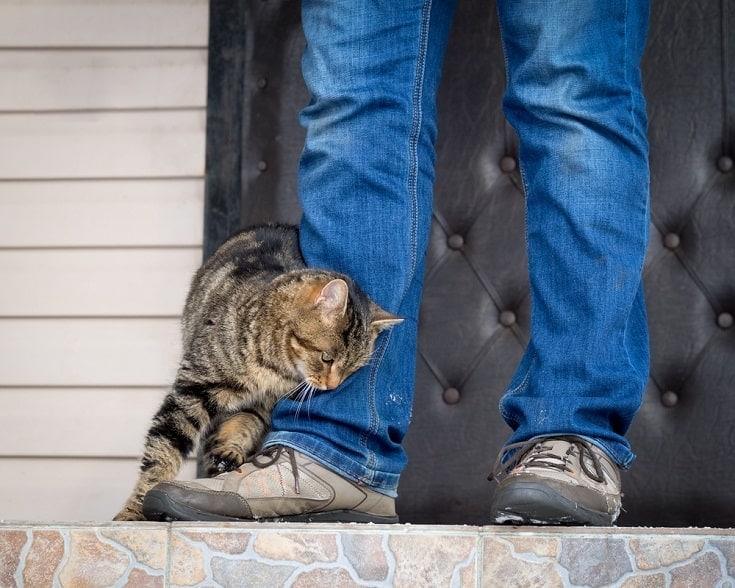VET APPROVED

The information is current and up-to-date in accordance with the latest veterinarian research.
Learn more »Click to Skip Ahead
Savannah cats are beautiful animals you just want to be close to in order to understand them better. They have playful, adventure-seeking, welcoming personalities. This is because the cat has unique genes from a domesticated cat and a serval, its wild parent. The interbreeding also influences their phenotypic characteristics, i.e., the Savannah is large and more agile than a typical cat.
What many people don’t know about the Savannah is that the cat has a special relationship with water. Savannah cats are good swimmers and have a special affinity toward water.

Why Do Savannah Cats Love Water?
The relationship between cats and water is fragile. Most pet owners know this and will try as much as possible not to force their cats into water. With the Savannah, however, the exact opposite is true. The cat is instinctively attracted to water.

Why is that so?
First, the cat’s wild ancestors inhabit savannahs, moorlands, forests, and areas close to water bodies. If an animal’s ecological zone is around water bodies, then it usually has some kind of relationship with the water. The same water-loving genes may be transferred into Savannah cats, which is why they love water too.
Secondly, the cat’s physical characteristics make them good swimmers. They have long legs which allows them to easily walk in shallow water without soaking their entire body. In case the cat dives into deep water, the hind legs have powerful muscles to generate thrust.
Still, a Savanna’s body is light. Wide paws, on the other hand, distribute the weight to four different points, which also prevents them from sinking. Another function of wide paws is that they act as paddles, with some Savannahs even having slightly webbed paws.
Thirdly, a serval in the wild would find most of its prey near water bodies and will feed on rats, small reptiles, and small birds. Most of these animals dwell near water bodies where plants produce seeds throughout the year. Additionally, there is an unlimited water supply, so the prey concentrates around water bodies.
The fourth reason is that in their ancestors’ native land, there are many external pests that cause irritation and discomfort. The cat must thus take a dip to get rid of them and clean themselves at the same time.
Do Savannah Cats Enjoy Swimming?
Tolerating the water and enjoying swimming are different concepts. The Savannah cat, however, enjoys swimming too. As we have already stated, its agile body and powerful hind legs allow it to swim effortlessly.
This again rotates back to the serval. A serval is among the few cats that enjoy swimming. Researchers have observed them cross large water bodies of their own free will.
What Other Cat Breeds Love Water?
Other water-loving cats are the Turkish Van, Manx, Bengal, both American and Japanese Bobtails, and the Maine Coon.
When Should You Stop a Savannah From Going Into the Water?
While many pet owners want to ensure their animals have everything they need to be happy, there are some instances where you should not allow a Savannah cat to get wet.
- During winter. The Savannah cat’s ancestral wild lines inhabit warm tropical and equatorial regions. Therefore, it may not be well adapted to extremely cold winters.
- When they are sick. A sick cat wants to be kept warm. Allowing it to get into the water may worsen the signs.


Conclusion
Savannah cats love water and swimming because their ancestors are servals, a species of water-loving wild felines. Allowing them to take a plunge is a perfect way to let them drain excess energy and clean their coats. Always monitor your Savannah while in the water and make sure they know how to safely get out.
Featured Image Credit: AJR_photo, Shutterstock











